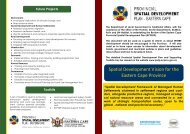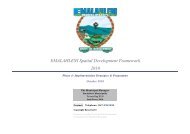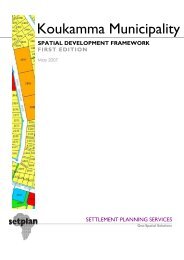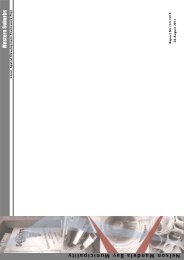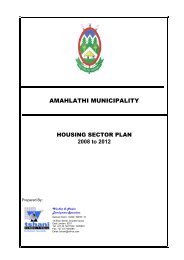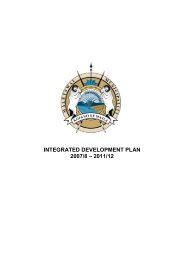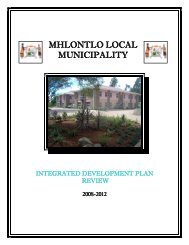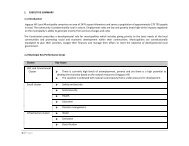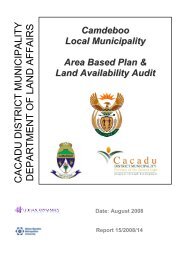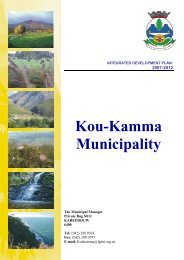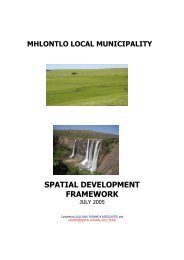Port St Johns LM IDP May02.pdf - Provincial Spatial Development plan
Port St Johns LM IDP May02.pdf - Provincial Spatial Development plan
Port St Johns LM IDP May02.pdf - Provincial Spatial Development plan
- No tags were found...
You also want an ePaper? Increase the reach of your titles
YUMPU automatically turns print PDFs into web optimized ePapers that Google loves.
31‣ Geological and Soils- GeologyGeological studies (detailed and/or desktop) of various urban areas in the <strong>Port</strong> <strong>St</strong>.John‟s region has been conducted to date. Although the detail of these studies are notincluded in the Integrated <strong>Development</strong> Plan, their significance are noted. Futuredevelopment must take cognisance of these studies done to dateAccording to the available Geological Map, the study area is underlain by Sedimentaryrocks of the Karroo sequence (Ecca and Beaufort group are the most important groupsoccurring). Sandstone formations of the natural group are also present.- SoilsThe region is characterised by euthopic brown with megalithic soils. These soils aresuitable for intensive cultivation.2.1.4 Land Use Patterns‣ Settlement Pattern (Regional)The Regional settlement pattern in the study area is characterised by one urban area (<strong>Port</strong><strong>St</strong>. John‟s) that acts as a regional service centre supplying the surrounding rural villageswith commodities and services.The centre serves as an administrative and decision making centre. The highestpopulation concentration is found in the surrounding rural villages (Refer to Map No. 2)‣ Settlement Pattern (Local)The majority of the population in <strong>Port</strong> <strong>St</strong>. John‟s Town is settled in Mtumbane locatedbetween the central area and second beach. Natural vegetation plays a very big role in thedevelopment of the land (topographical features) and urban areas. Informal settlementsalso occur on the periphery of the formally settled areas.Rural villages occupy the bigger portion of land in the region. Table 1 indicates landcover.Table 1: Land CoverageLAND TYPE AREA (ha) PERCENTAGEAgriculture 304,63912 23,6Commercial 0 0,0Industrial 0,18013 0,01Mines and Quarries 0,87738 0,07Residential 3,60375 0,28Small Holdings 0 0,0Waterbodies 14,94308 1,16Other 967,21562 74,9TOTAL 1291,45908 100<strong>Port</strong> <strong>St</strong>. John‟s Integrated <strong>Development</strong> PlanChapter 2: Analysis



